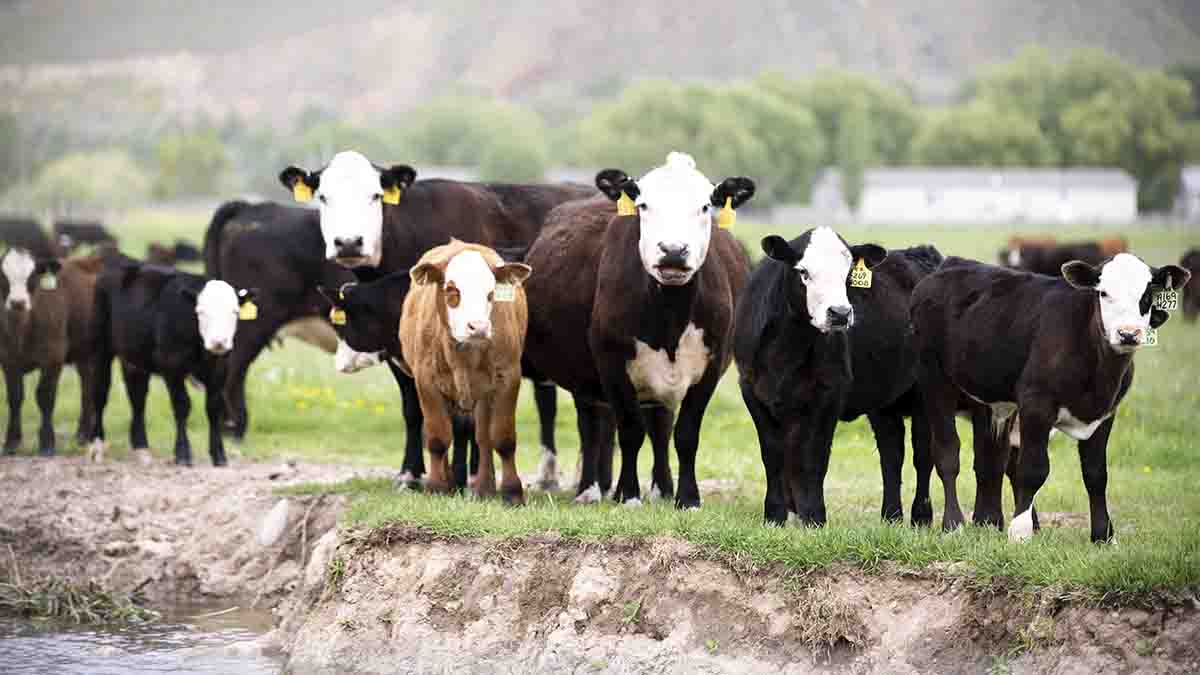Demo on Grazing Cover Crops
April 17, 2024
University of Idaho researchers are studying how producers may boost forage production, minimize greenhouse gas emissions and improve the health of their soils through the rotational grazing of cover crops.
The research and demonstration project is part of U of I’s five-year, $55 million Innovative Agriculture Marketing Partnership for Idaho (IAMP) grant, funded by the U.S. Department of Agriculture to increase adoption of climate-smart food production practices.
Professor John Hall, a UI Extension specialist of beef and cattle management, is leading a cover crop grazing demonstration project on 35 acres at the Salmon-based U of I Nancy M. Cummings Research, Extension and Education Center, funded over five years with $125,000 from the IAMP grant.
Producers plant cover crops primarily to improve soil health and build soil organic matter. Hall’s demonstration involves bringing in 30 head of cattle to graze cover crops, thereby also capitalizing on their forage value. He’ll use temporary, electric fencing to confine cattle into smaller paddocks, moving the livestock roughly every three days. The method results in uniform grazing of forage and distribution of cattle manure to lend fertility to the system. The brief grazing duration leaves roots intact to capture more carbon and produce more forage for future grazing.
Hall plans to plant the cover crop — likely annual grasses in the first year so that he can control the broadleaf weeds with herbicide — in late April and to commence grazing about 45 days after planting. In the fall, triticale will be planted in the cover crop area for spring hay. He anticipates seeding a mixture of cover crops that provide good forage directly into the triticale during the following season.
“The advantage to using cattle on cover crops is the fact that we’re able to produce another agricultural product on the same amount of land and still capture carbon,” Hall said. “Not only are we capturing carbon in the soil, but we’re also capturing carbon in the animal, and I think people sometimes forget about that.”
Gwinyai Chibisa, an associate professor of ruminant nutrition and metabolism, will place devices in irrigated pastures and cover crop plots at the Cummings center to measure carbon dioxide emissions from cattle and soil, both before and after grazing. Results from the Cummings center will provide benchmark data. Chibisa will also work through Desert Mountain Grass Fed Beef to take emissions measurements from producers who graze cover crops for inclusion in a model. Data will be pooled with similar grazing-emissions projects ongoing throughout the country with USDA Partnerships for Climate-Smart Commodities funding.
“A lot of people, especially in the cities, think grazing is not a good thing, but there are indications that grazing can actually help capture carbon if it’s managed in the right way,” Chibisa said. “If grazing is managed well, you’re going to stimulate growth of plants and have increased carbon capture in the rooting systems.”
Producers will measure cattle weight gain and submit cover crop samples to shed light on feed quality of cover crops. Chibisa will also evaluate the potential to reduce emissions by finishing cattle on grass rather than conventionally in a feedlot.
“After grazing events, do we see any changes in terms of the release of carbon? If we have cover crops and graze them, what are some of the changes in terms of soil attributes? We want a full accounting of where the carbon goes in terms of that cycle,” Chibisa said.
The demonstrations at the Cummings center will be showcased during several Extension activities, including during field days and in videos about grazing management. The cover crop demonstration will inform producers about the ideal seeding timing and seeding rate for the region, as well as the likely forage yield, animal carrying capacity and animal performance on cover crops.
“Any time we have adult learners, especially ranchers, it’s an opportunity to create a conversation and bring in their experiences and things they have tried that may work for others, as well as the things we are demonstrating,” Hall said. “My hope is this will give people some opportunity to look and think about what might work on their ranch.”

About the University of Idaho
The University of Idaho, home of the Vandals, is Idaho’s land-grant, national research university. From its residential campus in Moscow, U of I serves the state of Idaho through educational centers in Boise, Coeur d’Alene and Idaho Falls, nine research and Extension centers, plus Extension offices in 42 counties. Home to nearly 11,000 students statewide, U of I is a leader in student-centered learning and excels at interdisciplinary research, service to businesses and communities, and in advancing diversity, citizenship and global outreach. U of I competes in the Big Sky and Western Athletic conferences. Learn more at uidaho.edu.






